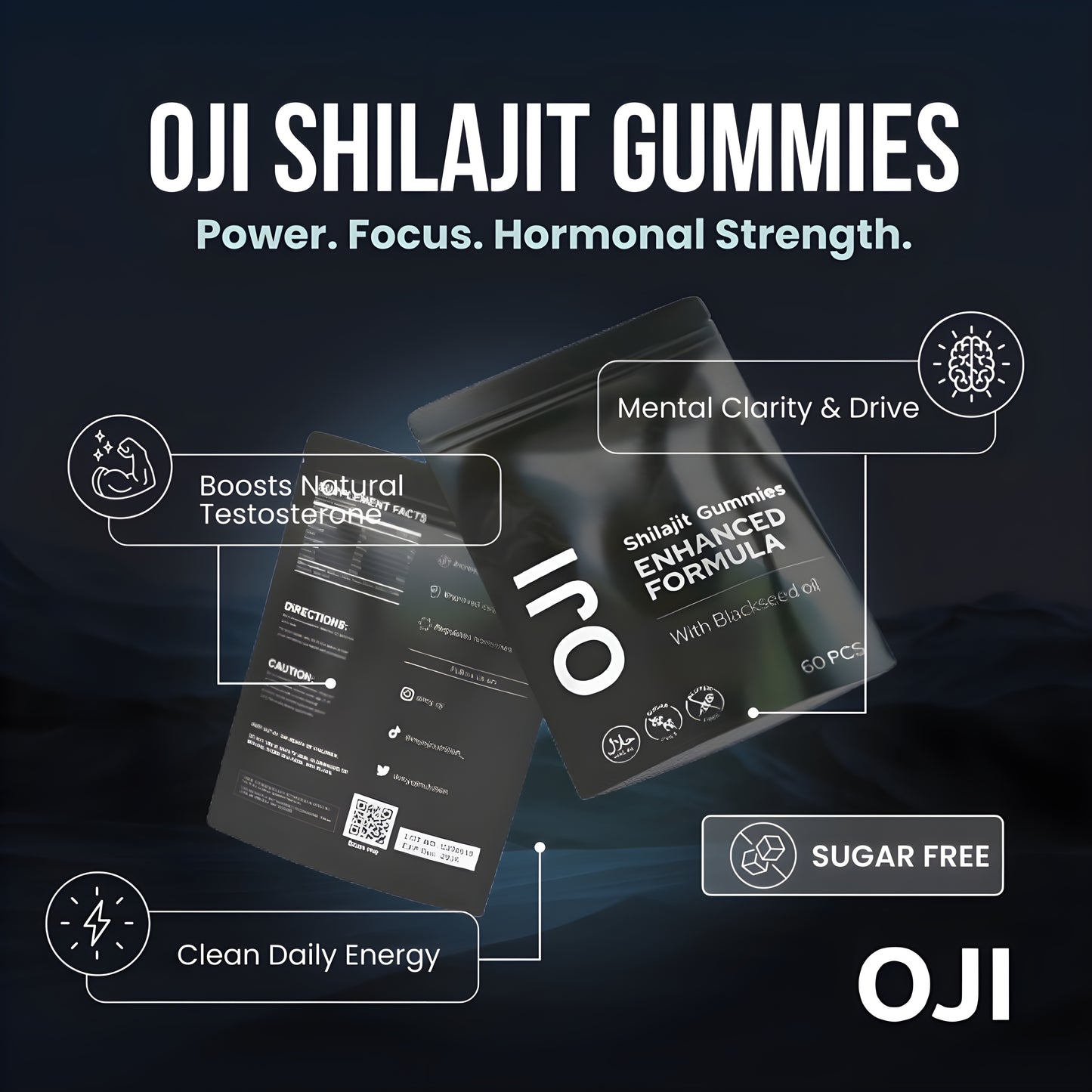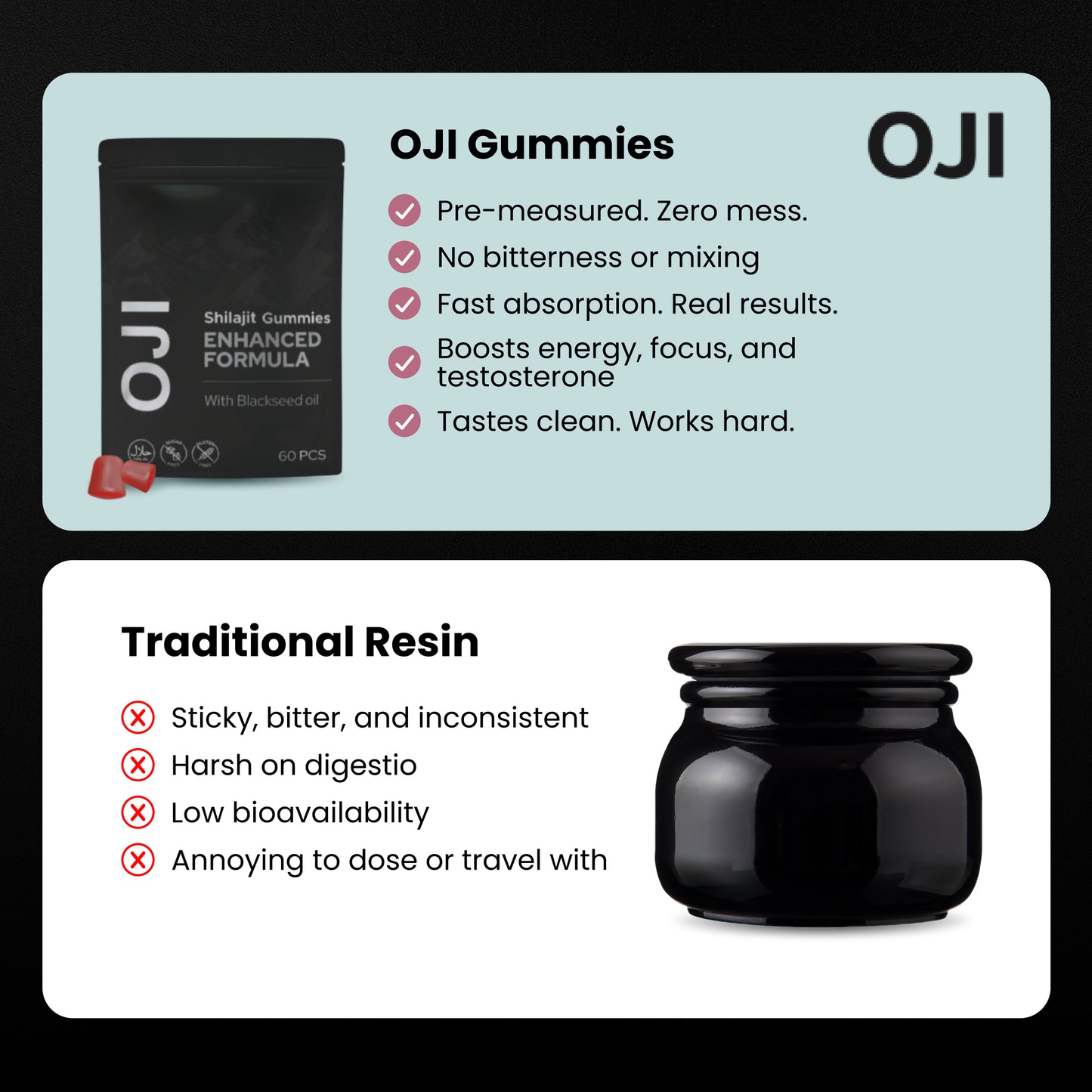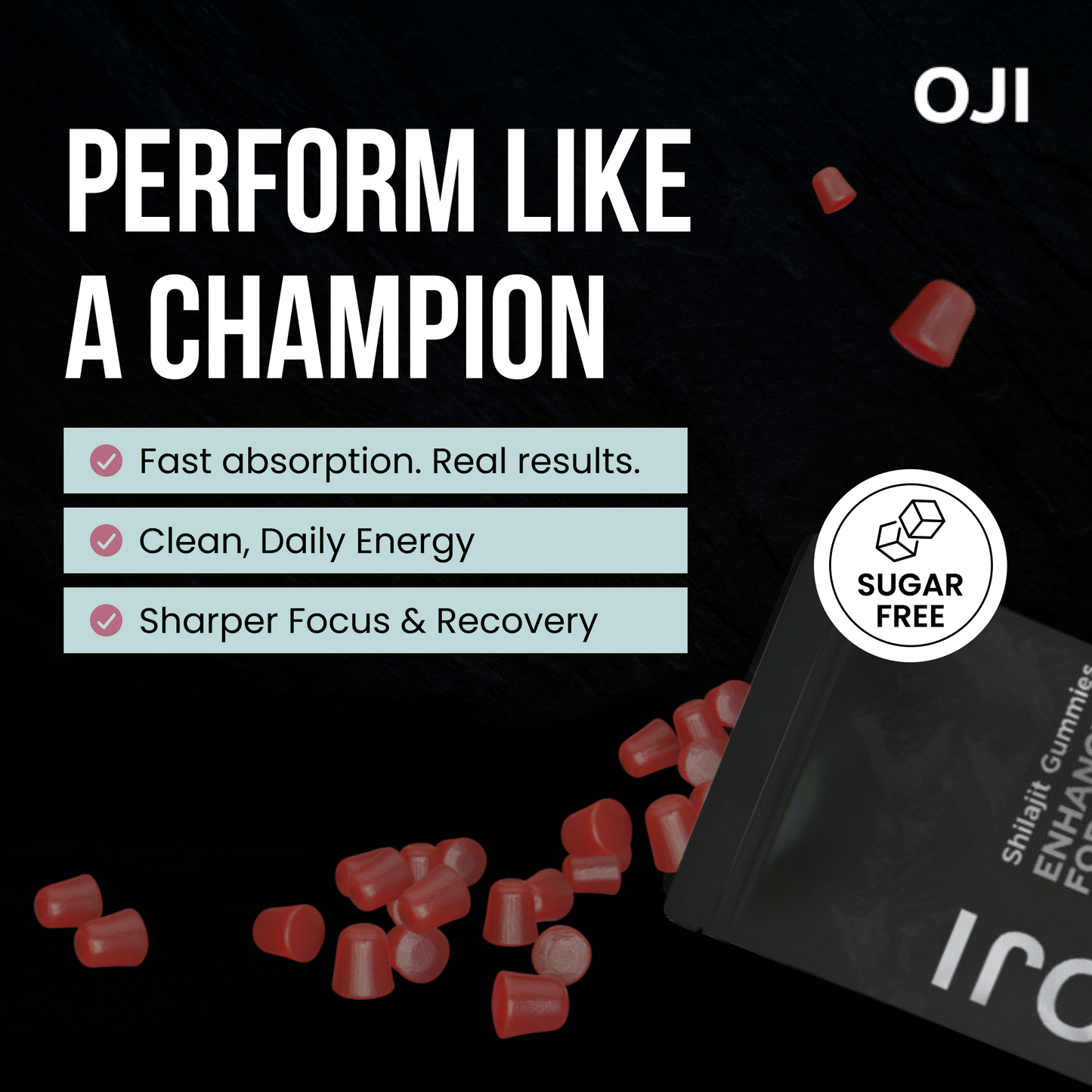The Real Cost of Ignoring Workplace Stress
That nagging tension in your shoulders or the constant feeling of being 'on edge' after a long day is more than just a passing inconvenience. It’s easy to write it off as a normal part of a demanding job, but letting chronic workplace stress go unchecked comes with a serious price tag—one that affects more than just your mood. Think of it like a warning light on your car's dashboard; you can ignore it for a while, but eventually, the problem underneath will cause a major breakdown. This isn’t just about feeling a bit overwhelmed; it’s about the real, cumulative damage to your health, finances, and overall quality of life.
The Domino Effect on Your Wellbeing
When stress becomes your constant companion, it starts to wear down your body’s natural defences. This isn’t just in your head; it’s a physical response. Your immune system can take a hit, leaving you more vulnerable to every cold and bug going around. Your digestion might feel off, and over the long term, it can be a factor in more serious health issues.
The mental toll is just as heavy. What starts as a bit of worry can spiral into persistent anxiety or a draining sense of hopelessness. That feeling of being mentally 'stuck' or unable to concentrate isn't a personal failure. It’s a direct symptom of your brain being flooded with stress hormones, making it nearly impossible to think clearly and perform at your best. This is a vital topic, and you can explore more strategies in our detailed guide on how to reduce stress at work.
The following infographic shows the most common sources of stress that employees report, highlighting just how complex the problem is.
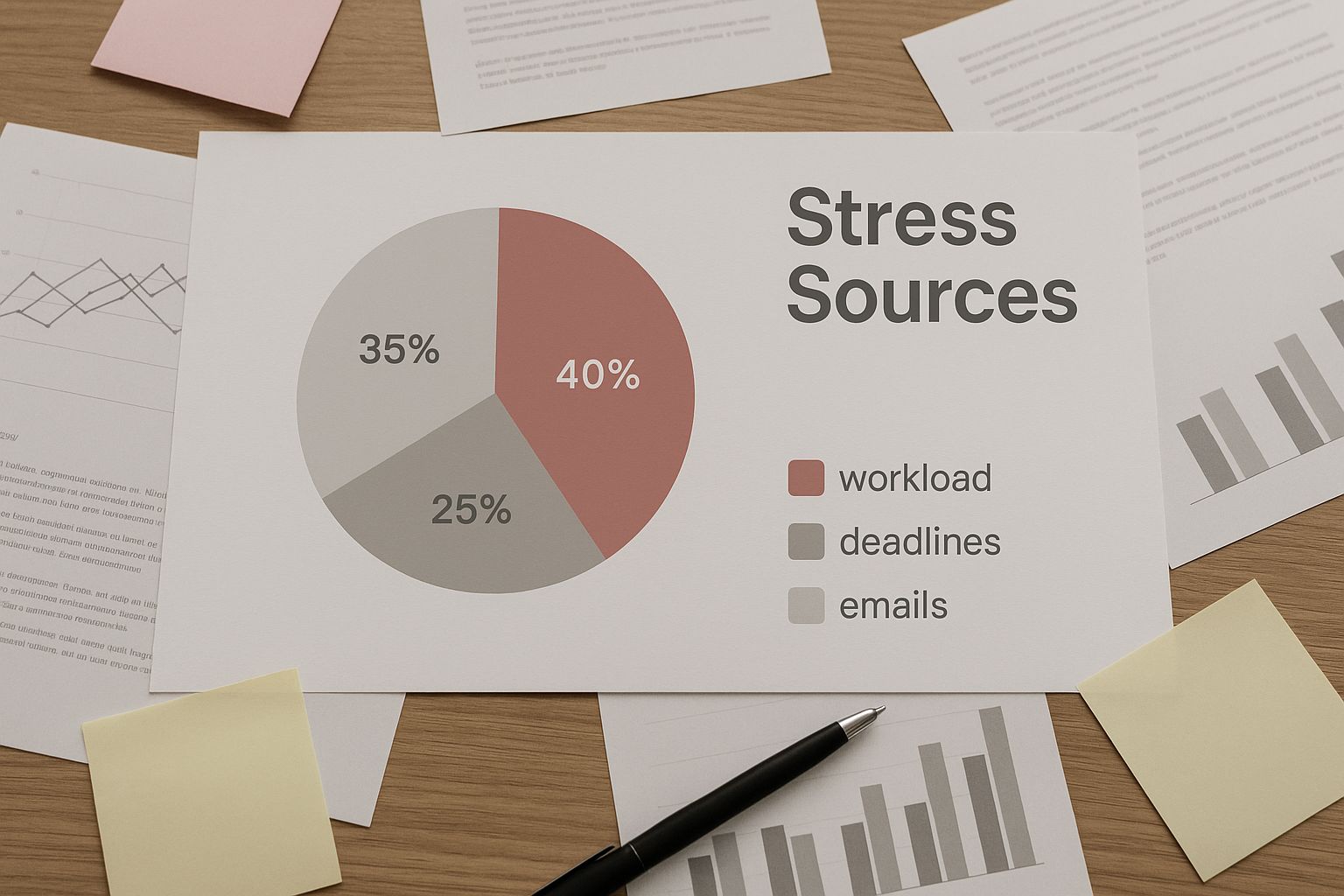
As the chart illustrates, the pressure isn't just from heavy workloads. A lack of support and unclear expectations at work also create the perfect conditions for burnout.
The Financial and National Impact
The cost isn't just personal; it's a massive economic issue. The impact across the UK is staggering, affecting businesses and the national economy alike. To put this into perspective, we've compiled data showing how stress-related issues affect different sectors.
| The Hidden Costs of Workplace Stress Across UK Industries |
|---|
| Comparison of stress-related impacts across different sectors including days lost, financial costs, and prevalence rates |
| Industry Sector | Stress Prevalence Rate (per 100,000 workers) | Average Days Lost Per Case | Annual Cost Impact (Estimated) |
|---|---|---|---|
| Public Services (Education) | 3,140 | 21.6 | ~ £1.2 billion |
| Human Health & Social Work | 2,960 | 20.8 | ~ £1.5 billion |
| Public Admin & Defence | 2,120 | 19.5 | ~ £900 million |
| Finance & Insurance | 1,630 | 18.2 | ~ £750 million |
| Construction | 1,010 | 17.5 | ~ £450 million |
The data clearly shows that sectors like public services and healthcare are hit the hardest, with higher prevalence rates and more working days lost per person. This translates into billions of pounds lost every year.
Recent figures from the Health and Safety Executive reveal that work-related stress, depression, and anxiety are responsible for 17.1 million working days lost annually in the UK. This accounts for about half of all work-related ill health and is estimated to cost UK businesses around £5.2 billion each year. Behind that national cost are millions of individual stories of missed opportunities, strained finances, and a lower quality of life. You can read the full findings on UK workplace stress statistics to understand the wider picture. Realising these real-world costs is the first, crucial step toward taking meaningful action.
Identifying What's Actually Stressing You Out
To properly tackle workplace stress, you first have to figure out what's actually causing it. It's surprisingly easy to get this wrong. You might convince yourself that an impossible deadline is the reason for your sleepless nights, but the real issue could be a quiet frustration over not having enough say in your own work, or feeling like your efforts consistently go unnoticed. Think of it like a persistent headache; you can keep taking painkillers (tackling the symptoms), but until you figure out what's triggering them (the root cause), you'll never truly feel better.
This isn't an uncommon problem. A recent report revealed that a staggering 91% of adults in the UK experienced high or extreme levels of pressure or stress in the last year. It’s hitting younger people particularly hard, with nearly 35% of those aged 18-24 taking time off work for health reasons while waiting for NHS treatment. These numbers show just how important it is to get specific about our stress triggers. You can read more in The Burnout Report 2025 from Mental Health UK.
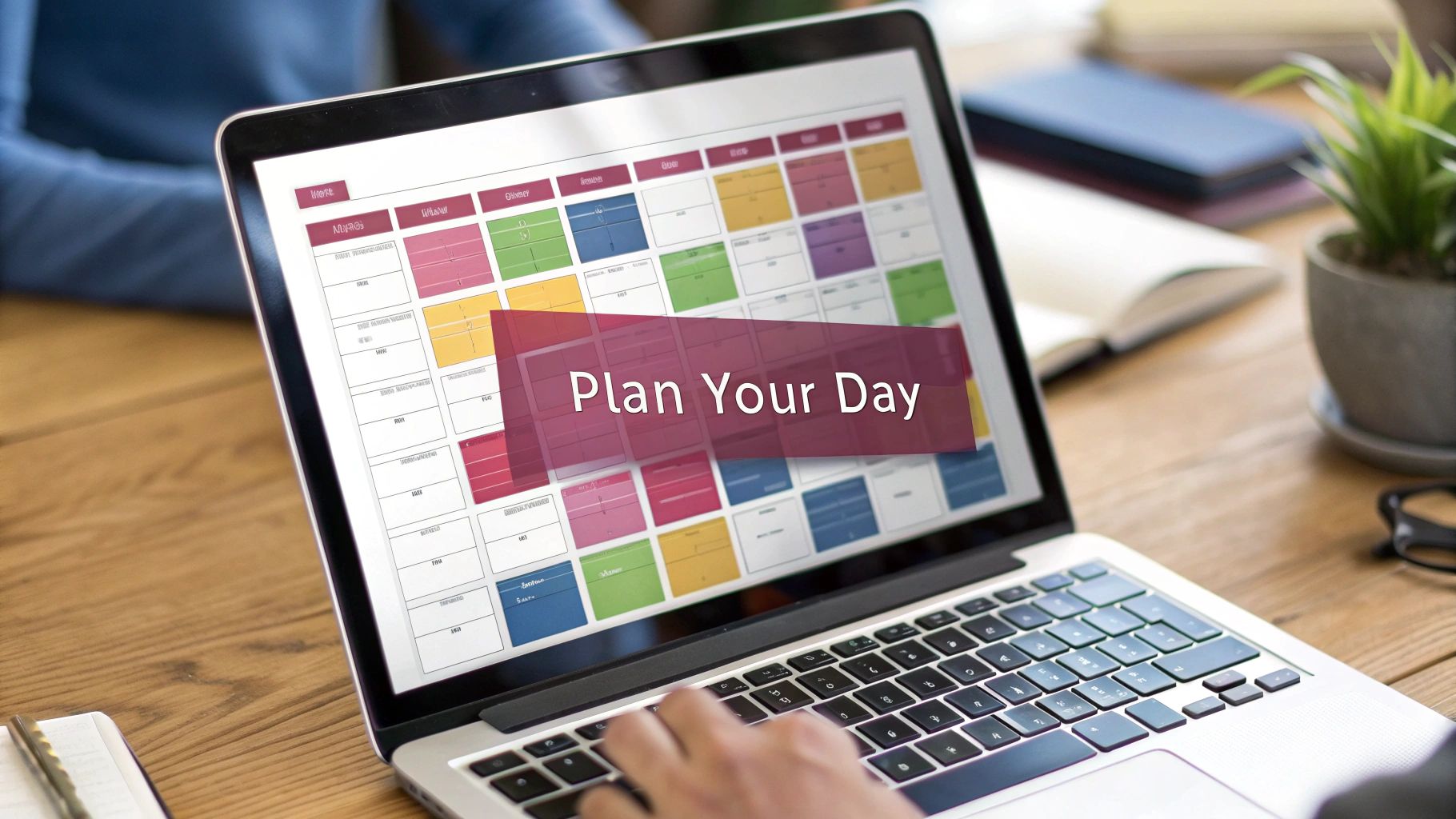
Uncovering Your True Stress Triggers
So, how do you discover what’s really going on? A great place to start is by keeping a stress journal for a couple of weeks. This doesn't need to be anything fancy; a simple notebook or a notes app on your phone works perfectly. The main goal is to look for patterns.
- When you feel stressed, make a note of it: Write down the time and what was happening. Were you in a particular meeting? Talking to a specific colleague? Just staring at a mountain of emails?
- Rate the intensity: Give your stress a score from 1 to 10. This will help you see the difference between a minor annoyance and something causing genuine distress.
- Note your reaction: How did your body and mind respond? Did your shoulders tense up? Did your heart start racing? Did you feel angry, overwhelmed, or anxious?
After two weeks, take a look back at your entries. You might find that your stress doesn't actually peak during big, high-pressure presentations, but in the unstructured "quiet" moments when you start worrying about your performance. Or maybe it's not the sheer volume of work, but the constant interruptions that break your concentration and leave you feeling out of control.
For instance, a friend of mine realised his biggest stressor wasn't his demanding clients, but his manager’s habit of sending "urgent" emails at 7 PM, completely erasing the line between his work and personal life. By pinpointing this specific behaviour, he was able to have a direct conversation and set a clear boundary. This one change significantly reduced his overall stress. This kind of self-awareness is the foundation for building a plan that actually works to manage and lower your stress at work.
Creating a Workspace That Works for Your Brain
Your immediate surroundings have a massive impact on your ability to focus and handle pressure. It's helpful to think of your workspace not just as a desk, but as a tool. It can either pile on the mental load or actively help you lower your workplace stress. Even small, conscious changes to your physical and digital environment can build up over time, creating little pockets of calm in an otherwise hectic day. This isn’t about splashing out on fancy ergonomic chairs or doing a complete office makeover; it’s about making smart, targeted tweaks.
Taming Your Digital Environment
Let's begin with what is often the loudest source of stress: the constant flood of digital noise. That never-ending stream of pings, pop-ups, and notifications is one of the biggest enemies of focused work and a major reason we feel overwhelmed. It keeps your brain on high alert, shatters your concentration, and makes simple tasks feel like they take forever. Taking back control of your digital space isn’t just a nice idea—it’s essential.
A great first move is to switch off all non-essential notifications on your desktop and phone. Do you really need a pop-up and a sound every single time an email arrives? Probably not. Instead, try scheduling specific times to check your inbox, rather than letting it interrupt you constantly. Another simple but effective trick is to tidy up your computer's desktop. A cluttered screen creates a subtle but real sense of mental clutter. A clean, organised desktop gives you a fresh psychological slate to start your work.
Optimising Your Physical Space
Your physical setup is just as important. If you're in an open-plan office, a good pair of noise-cancelling headphones can be a real game-changer, creating a much-needed bubble of concentration. For those working from home, it's crucial to draw a clear line between your "work zone" and your "rest zone." While working from the sofa sounds comfy, it blurs the boundaries, making it much harder to mentally switch off when the workday is over.
Even something as simple as lighting can make a difference. If you can, set up your desk to get as much natural light as possible. Studies have shown it can lift your mood and reduce eye strain. The UK’s Health and Safety Executive (HSE) provides excellent guidance on identifying work-related stress factors, including environmental ones.
Here's a quick look at their framework for assessing these pressures.
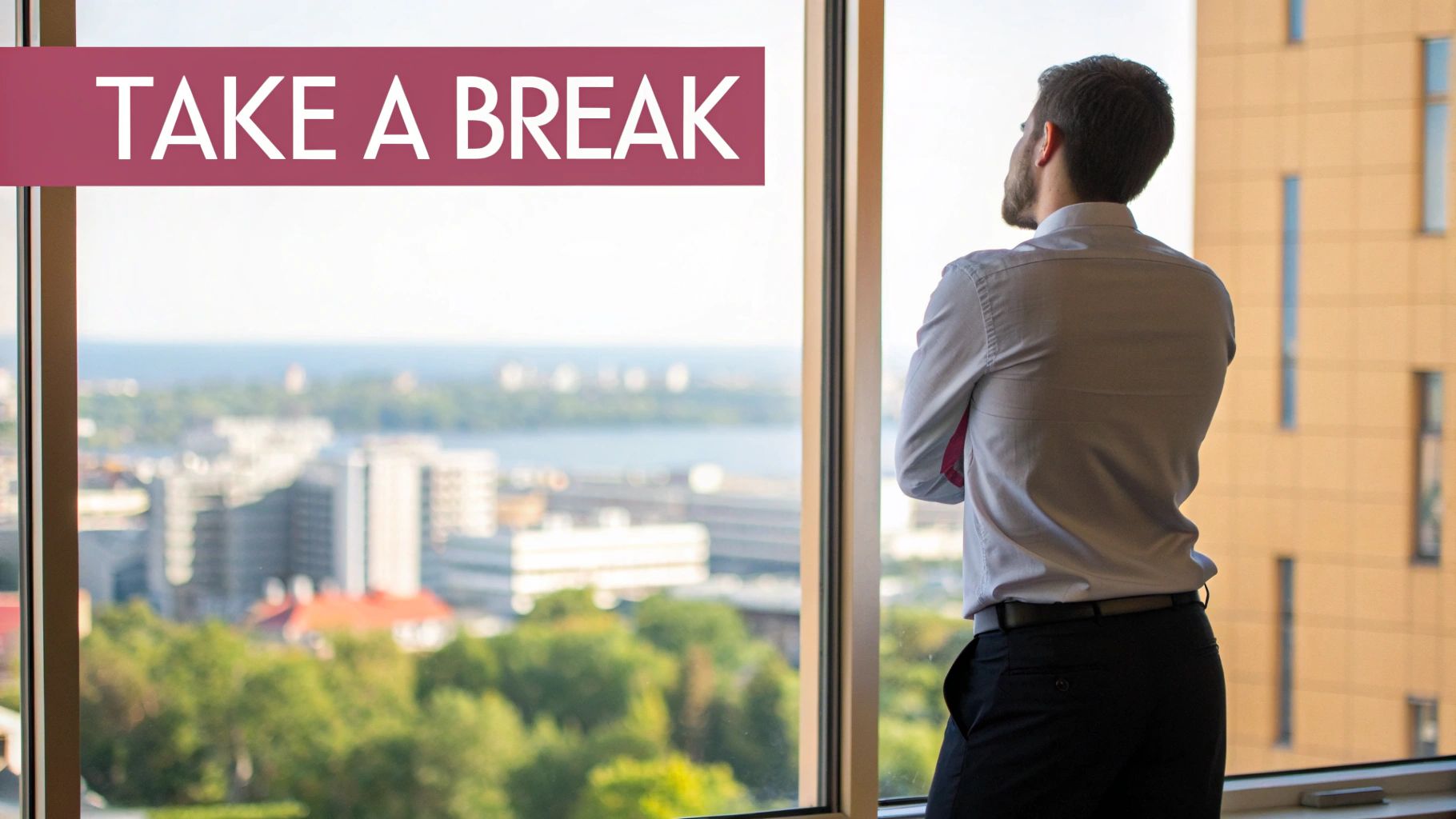
The HSE's model shows that an unsupportive environment is a key driver of stress, placing it right alongside things like excessive demands and a lack of control. By consciously shaping your workspace, you are directly tackling one of the core causes of workplace stress.
Taking Control of Your Time and Workload
That sinking feeling of being constantly behind isn’t a personal flaw; it’s often a sign that your ways of managing work are no longer serving you. When you’re juggling competing priorities and the pressure is on, it's easy to feel like you're failing. But learning how to reduce workplace stress often boils down to reclaiming control over your schedule and your to-do list. This isn’t about working faster, but smarter, and protecting your most valuable asset: your energy.
Protect Your Productive Hours
First things first, get to know your own rhythm. Are you sharpest first thing in the morning, or do you find your focus after lunch? These golden hours are for your deep work, and you need to guard them like a fortress. Go into your calendar and block them out as if they were critical meetings. This creates a visual barrier for your colleagues and, more importantly, a mental commitment to yourself.
When interruptions inevitably pop up, have a polite but firm response ready. Instead of dropping everything, try saying, "I'm right in the middle of something, can I circle back with you in an hour?" This simple phrase communicates your focus without being dismissive. It’s a small adjustment that puts you back in charge of your own time.
Prioritise with Purpose, Not Panic
When every task feels urgent, it’s almost impossible to know where to begin. This is the point where many of us either freeze up or descend into frantic, ineffective multitasking. A brilliant way to break this cycle is the Eisenhower Matrix. It helps you organise tasks based on their importance, not just their urgency.
Here’s how it works:
- Urgent & Important: These are your top priorities. Tackle them immediately.
- Important, Not Urgent: This is where strategic thinking and long-term projects live. Schedule time for these to prevent them from becoming future emergencies.
- Urgent, Not Important: These are often other people's priorities masquerading as yours. Delegate them if you can.
- Not Urgent, Not Important: These are time-wasters. Be ruthless and eliminate them.
Using this framework helps you make conscious choices about where to direct your energy, turning your to-do list from a source of anxiety into a clear plan of action.
To help you apply these principles, here's a table that breaks down workload management strategies based on how you're feeling.
Effective Workload Management Strategies by Stress Level
Strategic approaches to managing tasks and responsibilities based on current stress levels and capacity
| Current Stress Level | Recommended Strategy | Implementation Time | Expected Outcome |
|---|---|---|---|
| Low to Moderate | Eisenhower Matrix Planning: Proactively sort all tasks into the four quadrants. | 15-20 minutes daily | Increased clarity on priorities, reduced decision fatigue, and a sense of control. |
| High | "One Thing" Focus: Identify the single most important task that will move the needle and focus solely on it. | 5 minutes | Immediate reduction in overwhelm by narrowing focus and achieving a quick, meaningful win. |
| Very High (Burnout Risk) | Capacity Conversation: Proactively discuss your workload with your manager to renegotiate deadlines or priorities. | 30-minute meeting | Realistic workload, clear expectations, and collaborative problem-solving, preventing burnout. |
This table shows that your strategy should adapt to your current state. When you're feeling good, you can plan ahead. When you're overwhelmed, the goal is to simplify and communicate.
Learn to Communicate Your Capacity
One of the most challenging but crucial skills to develop is saying "no" or, more realistically, "not right now." When a manager drops a surprise project on your desk, your first instinct might be to just say yes. A far better approach is to communicate your current workload.
Try saying something like, "I'm happy to take this on. To ensure it gets the attention it deserves, which of my current priorities—Project A or B—should I deprioritise to make room?" This isn't being difficult; it's being responsible. It transforms the conversation from a simple request into a collaborative discussion about priorities, showing you're engaged while realistically managing expectations.
Alongside these practical strategies, it's also important to support your body's natural resilience. Adaptogens can be particularly useful here. You can learn more about ashwagandha for stress in our detailed guide. Mastering these time and workload management techniques is a powerful way to reduce stress and stop burnout in its tracks.
Navigating Workplace Relationships Without Losing Your Mind
Let's be honest, a huge chunk of workplace stress doesn’t come from the work itself. It often stems from tricky team dynamics, communication breakdowns, and navigating office politics. The relationships you have with your colleagues can either act as a welcome buffer against stress or become a primary source of it. Learning how to manage these connections is a vital skill for protecting your mental wellbeing.
Setting Boundaries That Actually Stick
One of the toughest challenges is setting firm boundaries, especially with managers or particularly demanding colleagues. This isn't about being unhelpful; it's about being crystal clear to protect your own time and energy. For instance, if you have a teammate who consistently tries to offload their work onto you, it’s easy to let resentment build. A better approach is to address it head-on.
You can do this with a simple, non-confrontational formula that I’ve found works wonders:
- Acknowledge their request: "I understand you need help with that report."
- State your reality: "However, I'm completely focused on the Q3 presentation, which is my top priority right now."
- Offer a realistic alternative (if you can): "I could give you some quick feedback this afternoon, or I’ll have more time to help properly next week."
This simple shift validates their need while clearly protecting your workload. It puts you back in the driver's seat and stops you from becoming the go-to person for everyone else's urgent tasks.
Handling Conflict Before It Escalates
Sometimes, the stress isn't about your to-do list but how you feel in your work environment. Feeling unsupported or unheard can be incredibly draining. It's a widespread problem; a UK-wide survey in 2025 revealed that a staggering 74% of adults have felt so stressed in the past year that they felt overwhelmed or unable to cope. This shows just how critical a supportive atmosphere is. You can discover more insights about the national scale of stress from Priory Group.
Mental health experts agree that reducing workplace stress is about more than just managing tasks. It involves creating a culture of supportive leadership and giving people the tools to handle interpersonal friction.
When conflict pops up, the best strategy is to deal with it early. If you feel a colleague undermined you in a meeting, don't let it fester and ruin your day. Find a quiet moment to speak with them privately. Using "I" statements is key here, as it stops you from sounding accusatory. Try something like, "When my idea was dismissed in the meeting this morning, I felt frustrated because I’d put a lot of thought into it." This opens a dialogue instead of starting a fight. Learning how to reduce workplace stress often means learning how to have these slightly uncomfortable five-minute conversations.
Building Daily Habits That Actually Stick
Knowing you should manage stress and actually doing it are two very different things. It’s easy to dream up big plans, like starting hour-long meditation sessions or completely overhauling your lifestyle overnight. But real, lasting change happens in the small, consistent moments you carve out during your day.
The secret isn’t about finding more time; it’s about embedding tiny, stress-reducing habits into your existing routine. The goal is to make them so automatic that you do them without thinking, especially when you need them most. Think of it like brushing your teeth—you don’t debate it, you just do it.
Weaving Mindfulness into Your Workday
One of the best ways to tackle workplace stress is to sprinkle short bursts of mindfulness throughout your day. This doesn’t mean you need to find a quiet room and sit cross-legged for ages. It’s about briefly pulling your focus into the present moment. A brilliant technique is to link a mindfulness practice to something you already do frequently.
For instance, every time you take a sip of your tea or coffee, use it as a trigger. Instead of gulping it down while scanning emails, take that first sip with intention. Pay attention to the warmth of the mug, the aroma, and the flavour on your tongue. This might only take five seconds, but it acts as a mental reset button, yanking you out of the whirlwind of your to-do list and grounding you. It's a tiny habit that stops the stress cycle before it can gain momentum.
The Power of Post-Work Rituals
How you finish your workday is just as crucial as how you start it. Without a clear boundary, work has a sneaky way of creeping into your personal time, leaving you feeling like you’re perpetually ‘on’. Creating a post-work ritual is a powerful signal to your brain that it's time to switch off and reclaim your evening.
This doesn't need to be complicated. It could be something as simple as:
- The Commute Shift: If you commute, use that time to listen to a podcast completely unrelated to work or a specific music playlist that signals the day is done.
- The Ten-Minute Tidy: Spend the last ten minutes of your workday organising your desk space and jotting down your top three priorities for tomorrow. This brings a sense of closure and control.
- The Wardrobe Change: As soon as you get home, change out of your work clothes. This simple physical act helps create a psychological dividing line between your professional and personal self.
I used to really struggle with this until I started my "shutdown routine." Before logging off, I write down one thing that went well that day and one task I’m intentionally leaving for tomorrow. This simple act helps me acknowledge what I've achieved and mentally let go of my workload. This deliberate disengagement is key to preventing the kind of chronic pressure that leads to burnout. Ultimately, building habits to reduce workplace stress is a game of small, consistent wins, not grand gestures.
Your Personal Stress Reduction Game Plan
Alright, let's turn all this theory into real-world action. Understanding how to lower workplace stress is one thing, but building a routine you can actually stick with is where the real magic happens. The best way forward isn't to try every strategy at once. Instead, it’s about crafting a personal game plan that fits your specific needs and work life. We're aiming for lasting change, not another stressful item on your to-do list.
Creating Your Personalised Action Plan
Let's start small. Pick just one or two ideas from the previous sections that really spoke to you. Was it the thought of finally taming your digital notifications? Or perhaps the idea of a post-work ritual to properly switch off sounded like a dream? The key is not to try and fix everything immediately. Choose what feels most doable and what you think will give you the biggest sense of relief right now.
For instance, your starting plan could be as simple as this:
- Goal: Protect my focus in the mornings.
- Action: For the next two weeks, I’ll block out 9 AM to 10:30 AM in my calendar for deep work and switch off email pop-ups during that time.
- How I'll Track It: A simple tick on my calendar each day I manage it.
This approach is realistic and won't just become another source of pressure. After a couple of weeks, see how it felt. You can then either add another small habit or adjust the first one.
Knowing When to Escalate
While personal tactics are incredibly effective, some stressors are just too big to handle alone. It’s crucial to recognise when a problem needs more than just a personal coping strategy. Clear signs that it might be time to have a word with your manager or HR include:
- An overwhelming workload that never lets up, no matter how efficiently you work.
- A difficult team atmosphere that is actively causing you distress.
- A constant feeling of uncertainty and anxiety because your role isn't clearly defined.
Bringing these issues up isn't a sign of weakness; it's a vital step towards creating a healthier work environment for yourself and your colleagues. If you decide to have this conversation, go in prepared. It helps to have specific examples of the problem written down and to have thought about some potential solutions you could propose.
Finally, remember that your body’s own resilience is a massive piece of this puzzle. Supporting your system with the right nutrients can make a real difference. If you're curious about how targeted supplements can support these behavioural changes, you might find our guide on supplements for stress and anxiety helpful.
To help take control of your vitality and build a strong foundation against stress, see how Oji Shilajit can support your journey towards better energy, focus, and balance.



